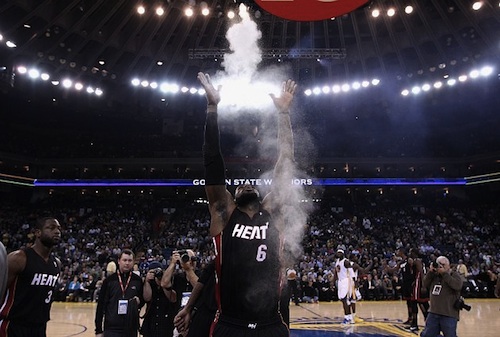Sports fans love to worry and assume a one-game sample size is the be-all and end-all. Straight up, it’s not. Case in point: the Miami Heat. Here’s the arc that has run through them this playoff season: they swept the Bobcats, which wasn’t surprising. If you take away one Saturday night in Brooklyn, they swept the Nets too. They hit the ECF at 8-1, looking like a potential ’01 Lakers model; meanwhile, if the Spurs reached the Finals against them, they would have played 7, 5, and maybe 7 games in their three rounds (19 total); the Heat could theoretically have gotten there playing 13. That’s a big thing when you talk about age differences, you know?
Now, of course, the story is a bit different: the Heat lost Game 1 — although admittedly, the game was played in Indianapolis, which was kind of the whole arc behind the Pacers’ season (“get home court”) — and looked pretty bad defensively in the process.
It appears we have a shifted narrative: we went from The Pacers look awful OMG is there infighting on that team? and The Heat look bad-ass, here comes the three-peat to The Heat are doomed, stand back and wait for the ascension of the Pacers.
Unfortunately, there are historical elements that defeat this idea (as well as the basketball acumen of men like LeBron James).
2011 Eastern Conference Finals, Game 1:
Bulls won. Series? Heat, 4-1.
“Small sample size,” you scream! OK. Let’s check out some more.
2012 NBA Finals, Game 1:
Thunder won. Series? Heat, 4-1.
Alright, alright … but that’s just two things, right?
2013 Eastern Semis, Game 1:
Bulls won. Series? Heat, 4-1.
Seeing a pattern yet? Here’s one more.
2013 NBA Finals, Game 1:
Spurs won. Series? Heat, 4-3.
Point is: this won’t be an easy series for Miami. Indiana has a lot of aspects that can trouble them — Hibbert’s height, Paul George as a guy who can make LeBron work for points, Lance Stephenson being younger than D-Wade, etc, etc. But is this thing over just because Game 1 was a bit of a rout? Good Lord, no.
